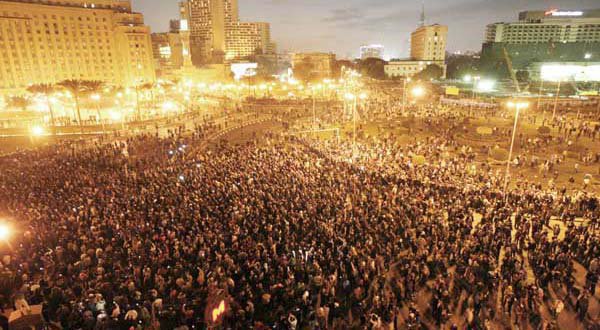On January 25th 2011 the world was stunned by the pictures and videos flooding out of Egypt as tens of thousands of anti-government protestors took to the streets in a ‘Day of Rage’ in protest over President Mubarak’s 30-year rule. Pro-democracy sympathizers across the world re-Tweeted and shared the updates, even as the Egyptian government disabled cell phone towers and blocked Twitter in an attempt to censor the material. There were reports that households and businesses opened up their wi-fi networks in support of the protestors to allow the dissemination of information. The pictures and videos that continued to stream out across YouTube and Facebook trended on Twitter worldwide, inspiring and shocking at the same time.
2011: The Year of Social Democracy
If 2011 is remembered for anything other than bank defaults and credit down-grades, it will be for the rise of social democracy in countries traditionally ruled by autocratic governments, dubbed the ‘Arab Spring’. In regions where official media has been heavily censored for years, the rise of personal access to the internet and social media networks has meant that populist movements now had a voice, and a voice that could reach the outside world and find sympathy.
The wave of protests that began in Tunisia in December 2010 spread first to Egypt, then to Libya, Bahrain, Syria and Yeman, with protests of varying sizes across many more middle-Eastern countries. As of the time of writing, regime changes have been instigated in Tunisia, Egypt and Libya.
Social media as a tool of change
Before 2011, ad-hoc events organized by social media had by and large been entertaining and quirky, often put together by arts groups such as Improv Everywhere: flash mobs gathering in Grand Central Station to freeze on cue for five minutes, or internet-based crazes such as planking.
But the methods of reaching thousands of people using Twitter hashtags, Facebook groups and easily-shared YouTube videos and Flickr streams were taken up by the masses in countries where censorship had traditionally blocked anti-government voices. The groundswell of populist discontentment with oppressive regimes and military rule was able to adopt and adapt new technologies and methods of communication to reach out to one another and to outside sympathizers, often at terrible risk and cost to their own lives and the safety of their families. Social democracy began to take on a new meaning, one synonymous with individual voices able to make themselves heard and document their struggle for the first time.
The sustained and bloody opposition to Colonel Gaddafi’s military dictatorship in Libya convinced NATO to intervene militarily to lend support to the rebels in the escalating civil war, and to help to protect civilians. On both sides of the struggle, the control of information became a major tool in encouraging or intimidating civilian uprisings. In the West, photographs taken moments after Colonel Gadaffi’s death flooded Twitter and other social media sites, against a backdrop of approval at the triumph of social democracy and the fall of a despotic, censorious regime.
Mob rule: the darker side of social democracy
Yet opinions of people-power and censorship in the West could be tested by what some would see as the darker side of ‘mob rule’. In August 2011 London was rocked by four days of rioting when what started as a peaceful protest against the fatal shooting of Mark Duggan by police officers escalated into violence, arson attacks and looting, mainly against the rioters’ own communities, as well as police. The violence soon became detached from the original causes and became an outlet for the tensions of an underclass hit hard by high unemployment and recent austerity measures. The riots soon spread to other towns and were remarkable for the role of social media not only in the organization of the riots but also in the prosecution of hundreds of those involved who either incited violence on Facebook and Twitter, or who were photographed and videoed taking part.
Although some in the UK government and press targeted social media as the tool that had enabled the riots, the same tools were soon being used to organize clean-up operations and outpourings of community support.
Human Spirit
As demonstrated by the countries affected by the Arab Spring, social media will only ever be one of many important tools used by people to affect change. As with any tool, it is as moral or amoral as the person who uses it; the intention behind it is what matters. There is no substitution for the incredible bravery and resilience of the rebels who stood up to oppressive regimes at the risk, and often cost, of their own lives. It was the passionate desire for change and human determination that drove the spirit of the uprisings, and their ultimate success in overthrowing powerful military dictatorships. The rebels’ adoption of new technologies such as social media gave voice to a movement despite the censorship of the official media, but it was their courage and self-sacrifice that forced the change.
Originally published in Mashable

